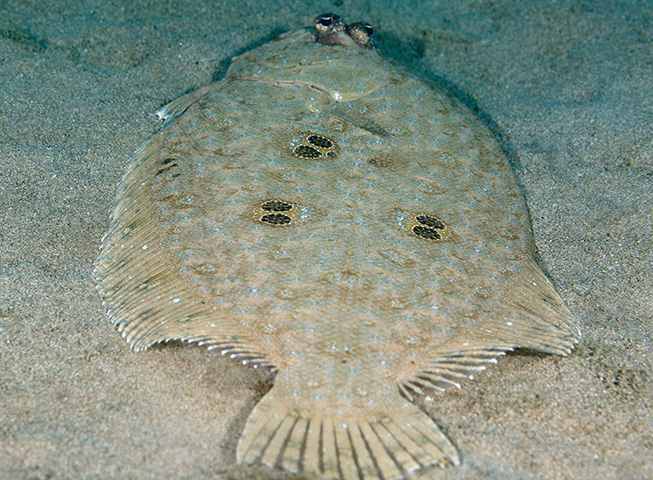| Paralichthyidae (Large-tooth flounders) |
| 40 cm SL (male/unsexed) |
|
demersal; marine; depth range 50 - 150 m |
| Indo-West Pacific: Nicobar Islands and throughout most of the Indo-Australian Archipelago, north to southern Japan (Ref. 9774). |
|
Dorsal spines (total): 0-0; Dorsal soft rays (total): 72-78; Anal spines: 0-0; Anal soft rays: 56-63; Vertebrae: 36-36. Above and below lateral line with 1 or 2 pairs of distinct double ocelli. Many darker rings and spots scattered on body and median fins. Body ovoid, its depth 2.2 to 2.4 times in SL. Head length 3.4 to 3.7 times in SL. Upper profile of head strongly notched in front of upper eye. A line connecting base of first dorsal-fin ray and posterior nostril on eyed side crosses maxilla. Snout protruded, its length 1 to 1.3 times of eye diameter. Eye diameter 4.3 to 5 times in head length. Maxilla extending to below or beyond middle of lower eye. Teeth in both jaws small, without strong canines (Ref 9774). Gill rakers palmate, as broad as long. Two to four large double ocelli on body (Ref. 559). |
| Inhabits muddy and sandy bottoms of the continental shelves. Feeds on fish (Ref. 30463, 48637) and small benthic animals. Marketed fresh (Ref. 9774). |
|
Least Concern (LC); Date assessed: 10 March 2021 Ref. (130435)
|
| harmless |
Source and more info: www.fishbase.org. For personal, classroom, and other internal use only. Not for publication.

